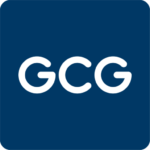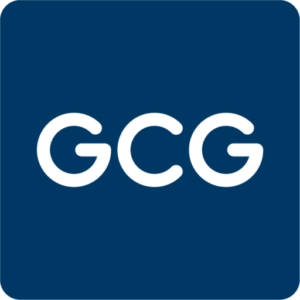
GCG Leadership Development Team
Introduction: The Tug-of-War Inside Every Leader
You know you should be thinking long-term.
You also know that your inbox, calendar, and team’s requests aren’t going to wait.
This is the tension nearly every leader feels: the push and pull between strategy and urgency, between shaping the future and present performance. In coaching sessions across industries globally, we hear a version of the same confession:
“I know I need to be more strategic — but I just don’t have the time.”
This second article in our series, The Strategic Leadership Journey, tackles that exact dilemma. If the first blog was about what strategic thinking is, this one is about what stands in its way — and how to clear a path through the clutter.
Series so far:
- Strategic Thinking Is a Superpower — Here’s How to Develop It
- The Strategic Leader’s Dilemma: Navigating Complexity and Uncertainty
- Cultivating Strategic Thinking: Tools and Practices for Leaders
- Traits of Strategic Thinkers: The DNA of Visionary Leadership
- Legendary Leader Series: The Strategic Brilliance of Satya Nadella
Why Strategic Thinking Gets Derailed
Many strategic failures are not a result of poor execution. They stem from failing to ask the right questions early enough.
So why don’t more leaders spend time asking those questions?
Because uncertainty is uncomfortable — and strategy lives there.
Tactical work is tidy. It gives the satisfaction of closure: emails sent, decisions made, issues resolved. Strategic work, by contrast, is often murky. It requires asking “what if” when there are no immediate answers, or choosing a direction when outcomes are uncertain.
This kind of discomfort makes leaders retreat into familiar territory — into control, into productivity, into motion.
At GCG, we’ve seen this happen even with otherwise brilliant leaders. Strategic thinking isn’t about intelligence — it’s about mental altitude and emotional comfort. A leader must hold ambiguity without collapsing it, and delay action long enough to see beyond the noise.
The Complexity Trap
Modern leaders are navigating environments of compounding complexity: faster product cycles, international teams, hybrid workforces, AI, social expectations, and regulatory change. Each variable on its own is manageable. Together, they create systems too tangled for linear problem-solving.
This leads to reactivity. Leaders get stuck solving visible issues rather than identifying systemic ones. They become fixers, not framers.
The result? Strategic misalignment, repeated fire drills, under-engaged teams — and a deep sense of leadership fatigue.
The real challenge isn’t making time for strategy. It’s breaking the pattern of short-term reactivity that robs you of perspective.
What Strategic Leaders Do Differently
In contrast, the best strategic leaders don’t try to eliminate complexity. They engage with it — differently.
They frame problems in layers. They define the difference between what is urgent and what is important. And they discipline themselves to pause, zoom out, and listen before they move.
A client we worked with — a senior executive in a multinational health tech company — was known for his speed. Quick decisions, quick responses, quick turnarounds. But when asked why his cross-functional transformation initiative was stalling, he admitted something telling:
“Everyone’s moving fast, but I’m not sure everyone is moving in the same direction.”
He wasn’t lacking action. He was lacking alignment.
Through coaching, he learned to start his weeks not with his to-do list, but with a simple question: “What decisions this week shape the future, not just manage the present?”
That shift — from pace to perspective — fundamentally changed how his leadership team operated.
Coaching as Strategic Mirror
Leaders often know they’re stuck in the weeds. What they don’t always know is how to get out — or what the “higher ground” even looks like.
That’s where coaching plays a uniquely powerful role. Not as a solution factory, but as a strategic mirror. Coaches hold up what a leader is prioritizing versus what they say they value. They challenge assumptions that feel like facts. They stretch a leader’s thinking without telling them what to do.
At Global Coach Group, we’ve built our approach around this exact need: helping leaders navigate complexity not with more activity, but with clearer awareness. And because our method includes coworker input and measurable outcomes, leaders not only think more strategically — they’re seen to do so by the people who matter most.
Practical Moves for Reclaiming Strategic Focus
So how does a leader start thinking more strategically when the urgent won’t stop knocking?
Here’s what we’ve seen work — in real leaders, under real pressure:
1. Schedule Strategic Time — and Defend It
This isn’t calendar management. It’s oxygen. Block 90 minutes weekly to think — about the horizon, about systems, about second-order effects. Treat it as immovable as your highest-stakes meeting.
2. Ask Better Questions
Strategic leaders don’t start with “What’s wrong?” They ask:
- “What is this a symptom of?”
- “What’s the long-term impact if we don’t change this?”
- “What does success look like two years from now?”
3. Use Coworkers as Signal Readers
Don’t lead alone. Coworkers are your early warning system for misalignment, confusion, or opportunity. Involving them through structured feedback and feedforward accelerates insight.
4. Shift From Urgent to Important
Each week, identify one high-impact decision or issue that has no clear deadline — and work on it anyway. That’s often where strategy hides.
Conclusion: Leading Through the Fog
Strategic leadership doesn’t mean ignoring the present. It means shaping the present with the future in mind.
Yes, the urgent will always exist. But it’s the important — the direction, the questions, the long-view decisions — that defines your leadership legacy.
In our next post, “Cultivating Strategic Thinking: Tools and Practices for Leaders,” we’ll move from insight to action: what leaders can practice, adopt, and build to strengthen their strategic capability over time.
But for now, ask yourself this:
Are you managing the noise, or are you clarifying the signal?
The Strategic Leadership Journey — Read the Series:
- Strategic Thinking Is a Superpower — Here’s How to Develop It
- The Strategic Leader’s Dilemma: Navigating Complexity and Uncertainty
- Cultivating Strategic Thinking: Tools and Practices for Leaders
- Traits of Strategic Thinkers: The DNA of Visionary Leadership
- Legendary Leader Series: The Strategic Brilliance of Satya Nadella
At Global Coach Group (GCG), our network of over 4,000+ experienced coaches is dedicated to delivering tailored leadership coaching to help leaders become more self-aware, improve their communication strategies, and ultimately drive better team performance.
For leaders who want to become coaches or coaches looking to enhance their leadership coaching skills, Global Coach Group (GCG) provides a comprehensive leadership coaching certification program. GCG’s internationally acclaimed coaching tools and resources can help you improve your coaching proficiency and empower you to guide others.

GCG Leadership Development Team
Learn about the GCG's Coaching Tools
Measurable results, in LESS Time.
Reduce your session prep and follow-ups to just 15 minutes, while delivering coaching that improves leadership, team and business performances with 95% coworker satisfaction
